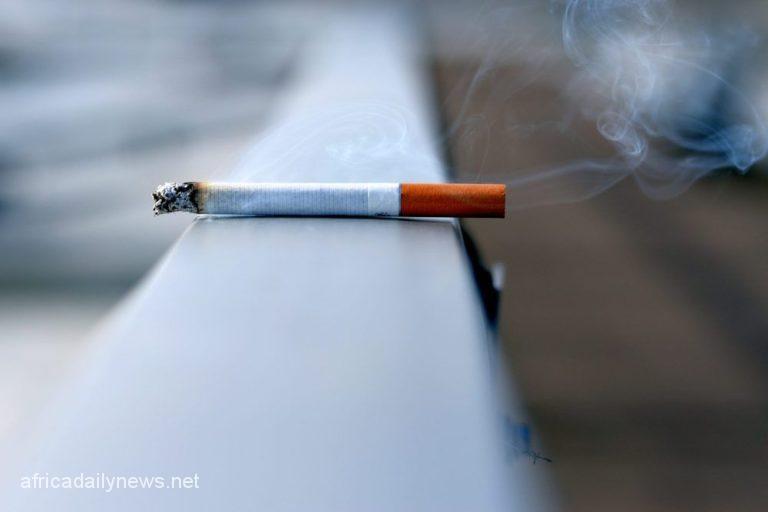If tobacco companies had the time to keep up with science and research, a couple of months from now, cigarette packs would have more than the popular one-sentence warning. The warning would be updated to something that might read like— ‘smokers are liable to die young, birth asthmatic children and/or grandchildren.’ Well, a study on smoking and the effects of exposure to second-hand smoke recently reported these hereditary risks.
Let’s cast our minds back briefly. From the good old smoking pipes to neatly packaged cigarette sticks, all the way to the trendy, portable vapes (e-cigarettes), smoking, like other aspects of life, has not been left out of the evolutionary trends of this ever-dynamic human life. What’s most dazzling is how one person is battling withdrawal symptoms on their journey to breaking this highly addictive habit and another person lights their first cigarette stick in another corner of the world.
Read Also: Science Near Me: An Exciting New Way to Learn About Science
Neither the risk of respiratory diseases nor the boldly printed warning on cigarette packs— smokers are liable to die young— is enough to deter hardcore smokers. As of 2019, the total number of smokers in the world was 1.1 billion, going on to result in 7.7 million deaths in 2021, according to the Lancet Public Health report. Although only 14% of the global smoking populace lives in Africa, the World Health Organization (WHO) reports that 146,000 Africans die annually from tobacco-related diseases.
Despite the smoking restriction laws in some African countries, public smoking is still popular and worse still increasing secondhand smoke exposure risks on ignorant, unsuspecting citizens. In 2021, Premium Times reported the struggle to achieve full enforcement 7 years after passing the public smoking law in Lagos, Nigeria. The report lamented how many public places such as university campuses, stadia, restaurants, etc have no designated smoking areas or anti-smoking signages. Even the penalties for the offense are not strictly enforced.
Not only does Nigeria record over 28,000 preventable tobacco-related deaths annually, but the health cost and economic burden of smoking also continues to rise. According to WHO, although 44 African countries have endorsed its framework on tobacco control, the continent is faced with the challenge of implementing it. In fact, WHO projects that between 2002 and 2030, tobacco-attributable deaths will double in Africa. While this calls for more actionable preventive strategies, it is important to educate people about secondhand smoke and its attendant health risks.
The Centers for Disease Control and Prevention (CDC) defines secondhand smoking as exposure and inhalation of smoke from burning tobacco products, like cigarettes, cigars, hookahs, pipes, or smoke that has been exhaled, or breathed out, by the person smoking. According to the CDC, “people who do not smoke but are exposed to secondhand smoke at home or at work increase their risk of developing heart disease by 25–30%.” Every year, there are 34,000 heart disease deaths and 8,000 stroke cases resulting from exposure to secondhand smoke.
Of all the deaths resulting from secondhand smoke reported in Africa, about two-thirds (64%) are women- those who work or live with men that smoke. This exposure is particularly risky during pregnancy as it ends in underweight babies that are often sickly for most of childhood. More insight on the effects of smoking on progenies of smokers was recently reported by University of Melbourne researchers, Mr Jiacheng Liu and Dr Dinh Bui. According to them, smoking has the potential to damage the health of smokers, their children, and also that of their grandchildren.
The study sample consisted of 1689 children who grew up in Tasmania, their fathers as well as their paternal grandparents. They looked out for children who had developed asthma by the age of 7, investigating if the parents of such children were smokers (current or past) themselves or lived with smoking parents before the age of 15. Children whose fathers were exposed to secondhand smoke were 59% more likely to have non-allergic asthma compared to children whose parents were not exposed. In fact, the risk is 72% high if the fathers had a smoking history in addition to their childhood exposure to secondhand smoke.
While the researchers do not clearly state how lung diseases are passed down by smokers, they point out that tobacco smoke interacts with genes and goes on to modify their expression. Adding that the epigenetic changes to cells caused by tobacco goes on to affect sperms as boys grow up and the changes are passed on to their offspring.
While we look up to the appropriate quarters for mass sensitization in Africa, would you agree with me that cigarette packs should have more than the popular one-sentence warning about smokers dying young? Do share this with someone who needs it.
Ehi-kowoicho Ogwiji is a storyteller and natural scientist who is given to advocacy for a science-literate Africa. Ehi-kowoicho aspires to be a renowned science communicator and STEM thought leader in Africa and beyond. She writes from Abuja, Nigeria. Connect with her on social media @ogwijiehi or email her at [email protected]










